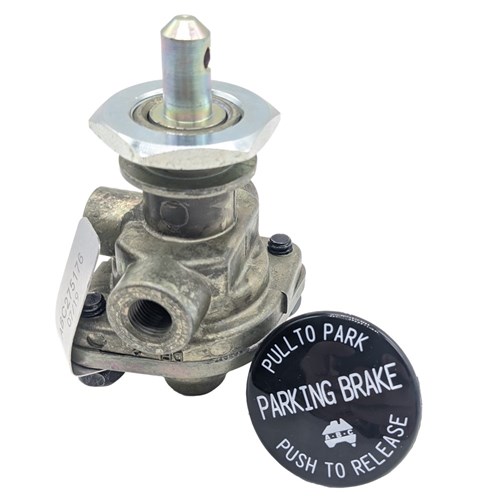Enhancing Functional Performance with Advanced Control Valves
Enhancing Functional Performance with Advanced Control Valves
Blog Article

Maximize Energy Savings and Comfort With Advanced Building Automation Controls
In the world of modern style and facility management, the combination of innovative structure automation regulates stands as a pivotal improvement. By utilizing the power of automation, structures can adjust, respond, and progress in means that were as soon as unthinkable.
Energy Efficiency Benefits
Energy effectiveness benefits can significantly decrease energy intake and operational prices in buildings. By executing energy-efficient methods and innovations, structure owners and drivers can achieve substantial financial savings while also adding to ecological sustainability. One of the main benefits of enhancing energy efficiency in structures is the reduction of energy costs. Energy-efficient systems, such as advanced structure automation controls, can maximize making use of sources like heating, illumination, and cooling, resulting in lower energy expenditures in time.
Moreover, boosted energy efficiency can lengthen the lifespan of structure devices and systems. By operating extra effectively, a/c systems, lighting fixtures, and other structure parts experience less damage, leading to lowered maintenance and substitute expenses. In addition, energy-efficient structures commonly command greater property worths and rental rates, giving long-lasting monetary benefits to owners.
Furthermore, energy performance can enhance owner comfort and efficiency. Properly controlled interior environments with ideal lights and thermal conditions produce an even more conducive and pleasurable work space, resulting in boosted employee contentment and performance. On the whole, the energy effectiveness advantages associated with sophisticated structure automation controls are multifaceted, including price financial savings, environmental stewardship, and owner wellness.
Boosted Comfort Control
Enhancing convenience control in building settings calls for an advanced integration of sophisticated automation systems for optimal occupant health. By making use of advanced building automation controls, centers can customize the interior atmosphere to meet the details demands and preferences of passengers. control valves.
By incorporating these advanced controls, structures can not just enhance comfort but additionally improve power performance by maximizing system operations based on real occupancy and usage patterns. Inevitably, prioritizing passenger convenience through sophisticated automation systems leads to an extra pleasurable and much healthier interior setting.
Operational Performance Improvements

In addition, the implementation of real-time surveillance and analytics tools makes it possible for structure drivers to determine power inadequacies and operational abnormalities promptly. By continually monitoring energy use patterns and system efficiency metrics, modifications can be made in real-time to optimize energy usage and ensure peak operational efficiency. control valves. Furthermore, incorporating demand action techniques right into building automation controls can further enhance operational effectiveness by dynamically changing energy usage based on grid problems and rates signals
Indoor Climate Optimization
Efficient article interior environment optimization is a basic facet of structure automation controls, guaranteeing occupants' comfort and well-being while making the most of power financial savings. By utilizing sophisticated sensing units and controls, building automation systems can continuously change and keep track of temperature level, humidity degrees, air quality, and ventilation to create an optimal indoor setting. Maintaining regular and comfy conditions not only boosts resident fulfillment yet also improves productivity and general health.
Indoor climate optimization additionally plays a crucial duty in energy performance. By fine-tuning air conditioning, air flow, and home heating systems based on real-time data and tenancy patterns, developing automation controls can significantly reduce energy usage - control valves. As an example, implementing approaches such as demand-controlled ventilation and thermal zoning can help decrease power waste while ensuring that each area of the building receives the essential conditioning.

Lasting Environment Production
Building automation controls not just maximize indoor environment problems for power performance and occupant convenience however likewise lay the foundation for creating a sustainable environment through strategic management of Go Here systems and resources. By integrating sophisticated structure automation technologies, such as sensors, actuators, and smart software application, facilities can check and adjust energy usage in real-time to lessen waste and lower their carbon impact. These systems allow anticipating upkeep, determining potential problems prior to they escalate and optimizing tools efficiency to improve long life and effectiveness.
Additionally, lasting atmosphere production prolongs beyond energy administration to encompass water preservation, waste decrease, and interior air quality enhancement. Building automation controls can regulate water use, identify leaks, and make certain correct waste disposal methods, contributing to overall sustainability efforts. In addition, by monitoring and regulating ventilation and filtration systems, these technologies enhance passenger health and wellness and performance while lowering power usage connected with cooling and heating procedures.
Verdict
To conclude, progressed building automation regulates offer considerable benefits in terms of power cost savings, comfort control, functional efficiency, indoor environment optimization, and producing a lasting environment. By applying these controls, buildings can accomplish optimal performance while minimizing energy consumption and boosting resident comfort. It appears that making use of advanced automation innovation is crucial in improving building performance and developing an extra sustainable future.
Power effectiveness advantages can substantially decrease energy usage and operational prices in buildings. In general, the energy effectiveness advantages associated with advanced building automation controls imp source are multifaceted, encompassing cost savings, environmental stewardship, and passenger health.
In addition, including demand feedback approaches right into structure automation controls can additionally improve functional efficiency by dynamically adjusting energy usage based on grid problems and rates signals.
Building automation regulates not just enhance interior environment conditions for energy efficiency and passenger comfort yet also lay the structure for producing a sustainable atmosphere with tactical management of systems and resources.In verdict, advanced building automation regulates offer substantial benefits in terms of energy savings, comfort control, functional performance, interior climate optimization, and producing a sustainable setting.
Report this page